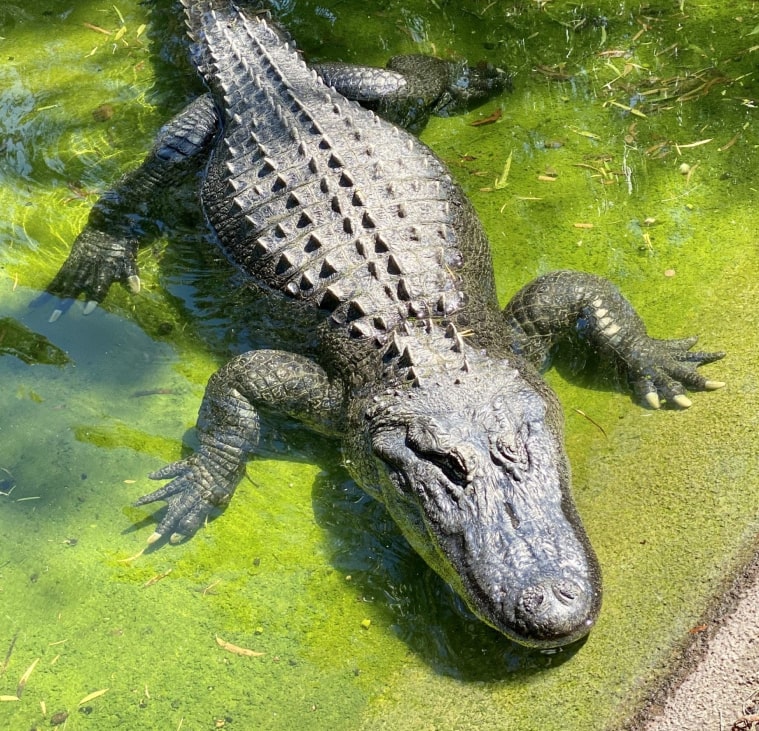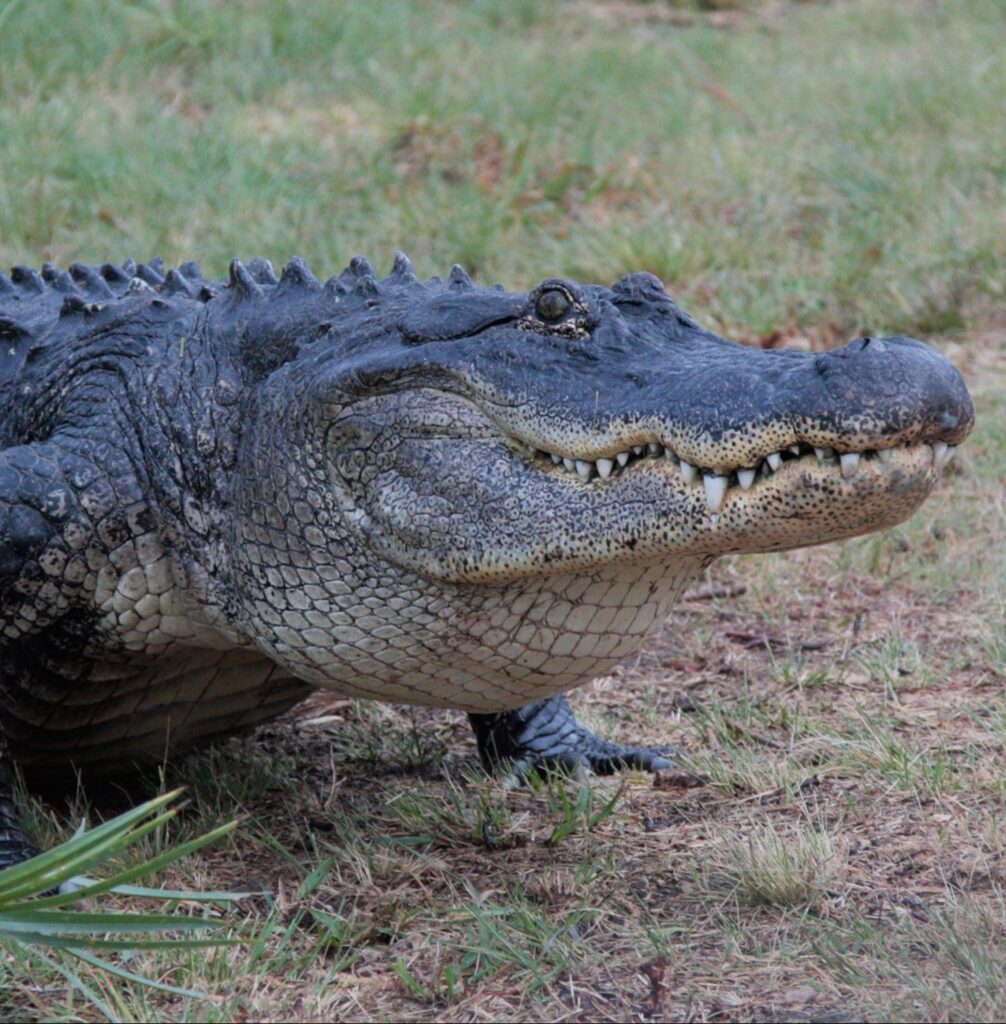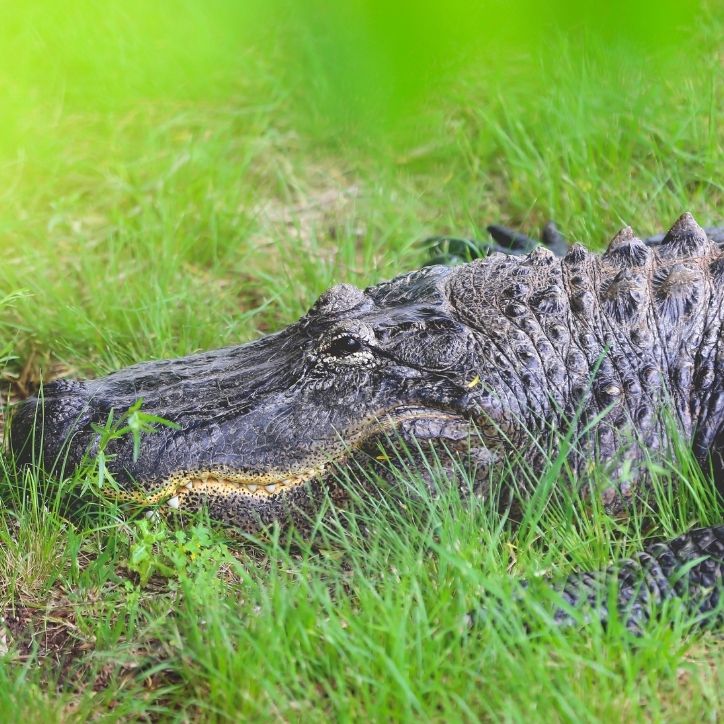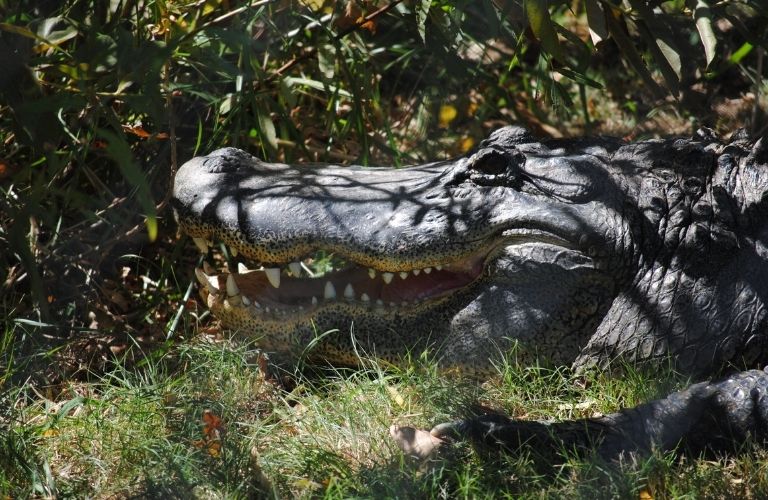Scientifically known as Alligator mississippiensis, the American Alligator is a fascinating reptile that has been the subject of curiosity and admiration for centuries. This spectacular species features among elite species as it plays a significant role in maintaining ecosystem health and balance. Here at the Abilene Zoo, you can catch sight of these striking Gators and delve in detail into their ecological roles and what sets them apart from their fellow reptilians. Here are the essential traits of these aquatic majesties.
Diet
American Alligators are carnivorous predators occupying the highest trophic level of the food chain. They feed exclusively on a variety of prey, including fish, birds, mammals, and other reptiles. Their diet varies depending on their age and size. Young alligators consume insects, amphibians, and small fish before gradually moving on to bigger prey as they grow. This diet variation is intentional and crucial for their development and survival.
American Alligators engage in ambush and active hunting strategies too. They often lie in wait, camouflaged by the water, before launching a swift attack on unsuspecting prey. Their powerful jaws and sharp teeth enable them to catch and consume a wide range of kills.
Habitat
American Alligators are native to the southeastern United States, primarily Florida and Louisiana. They inhabit, almost exclusively, freshwater environments such as slow-moving rivers, wetlands, swamps, and lakes. In exceptional cases, they can crash in saline habitations but only for a short while as they lack the glands necessary for salt excretion.
Size and Weight
American Alligators are among the largest reptiles in North America. Males typically reach lengths of 11 to 15 feet and can weigh between 500 to 1,000 pounds, while females are generally smaller, averaging 8 to 10 feet in length and weighing around 300 to 500 pounds.
Migration
While American Alligators are not known for long-distance migrations, they exhibit seasonal movements within their home ranges, often influenced by changes in water levels, temperature, and prey availability. Alligators may move to deeper water areas during the colder months or burrow into mud to avoid freezing temperatures.
American Alligator Sounds
American Alligators make myriad sounds, from deep bellows, roars, and hisses, to chirps for communication purposes during mating seasons and territorial displays.
Conservation Status
The American Alligators’ story is the epitome of conservation success. Once listed as an endangered species due to overexploitation and habitat loss, their status has improved significantly over the past few decades. Stringent conservation measures and effective legal protections saw to it that its populations bounced back, and today, they’re classified as “Least Concern” by the International Union for Conservation of Nature (IUCN).
Fast Facts

Saving Species
In 1973 American Alligators were listed as Endangered, but thanks to the hard work of conservationists like accredited zoos, we have rebounded their population in the wild.
Scheduled Examination for Iconic Abilene Zoo Alligator
June 5, 2021- Albert the Alligator, a longtime resident of Abilene Zoo, is scheduled for a medical examination due to prolonged lethargic activity and inappetence. The Veterinary and Animal Care teams will examine Albert early next week, where they will draw blood and perform a variety of medical tests.

FAQ
How fast can an american alligator run?
American alligators can run up to 11 mph on land in short spurts with their powerful legs. They seem slow but can dash when threatened or hunting. They can’t sustain that for long distances, so they’re sprinters, not marathon runners.
How long can american alligators go without eating?
American alligators can go up to 2-3 years without eating. They have a slow metabolism, especially in cooler temperatures, so they can conserve energy.





